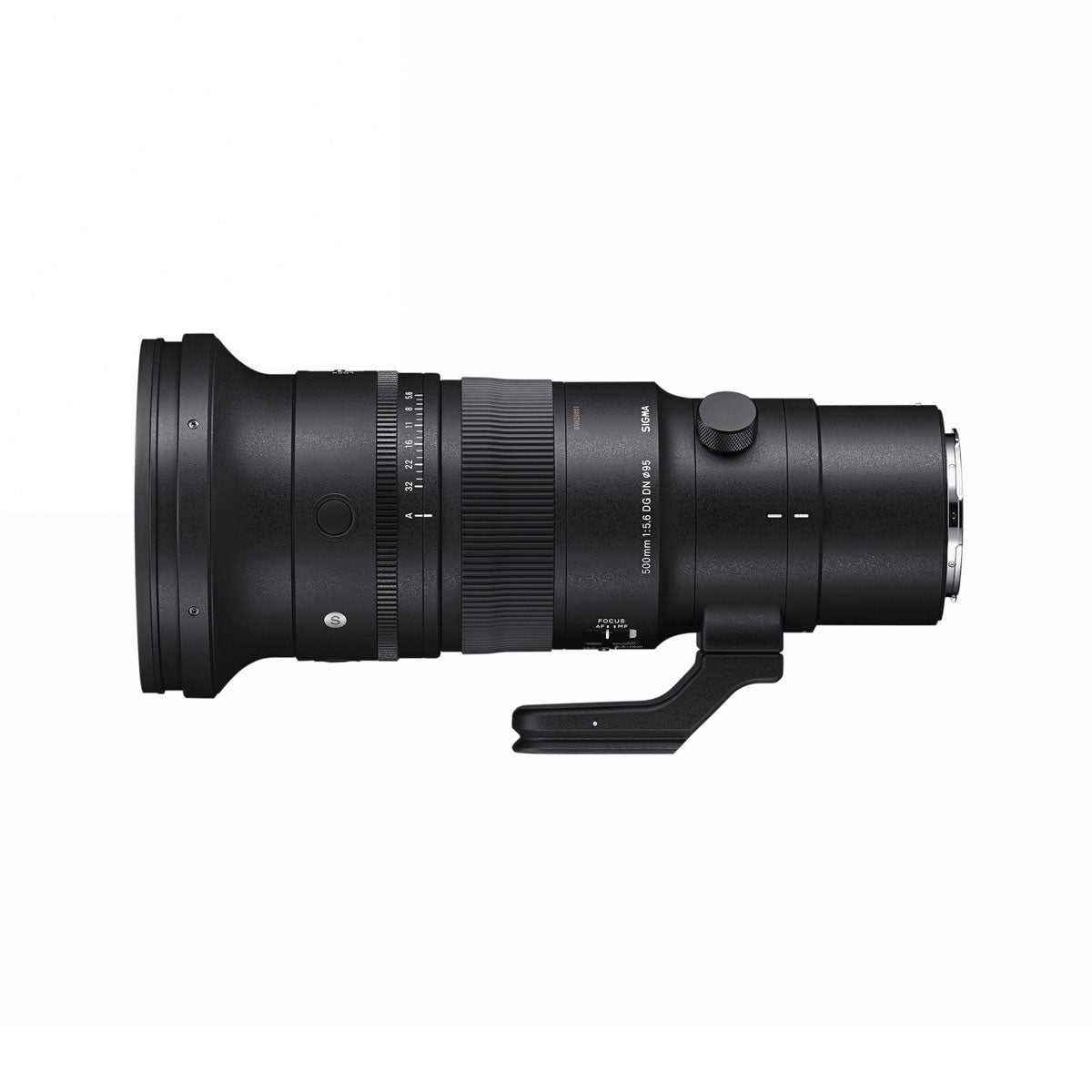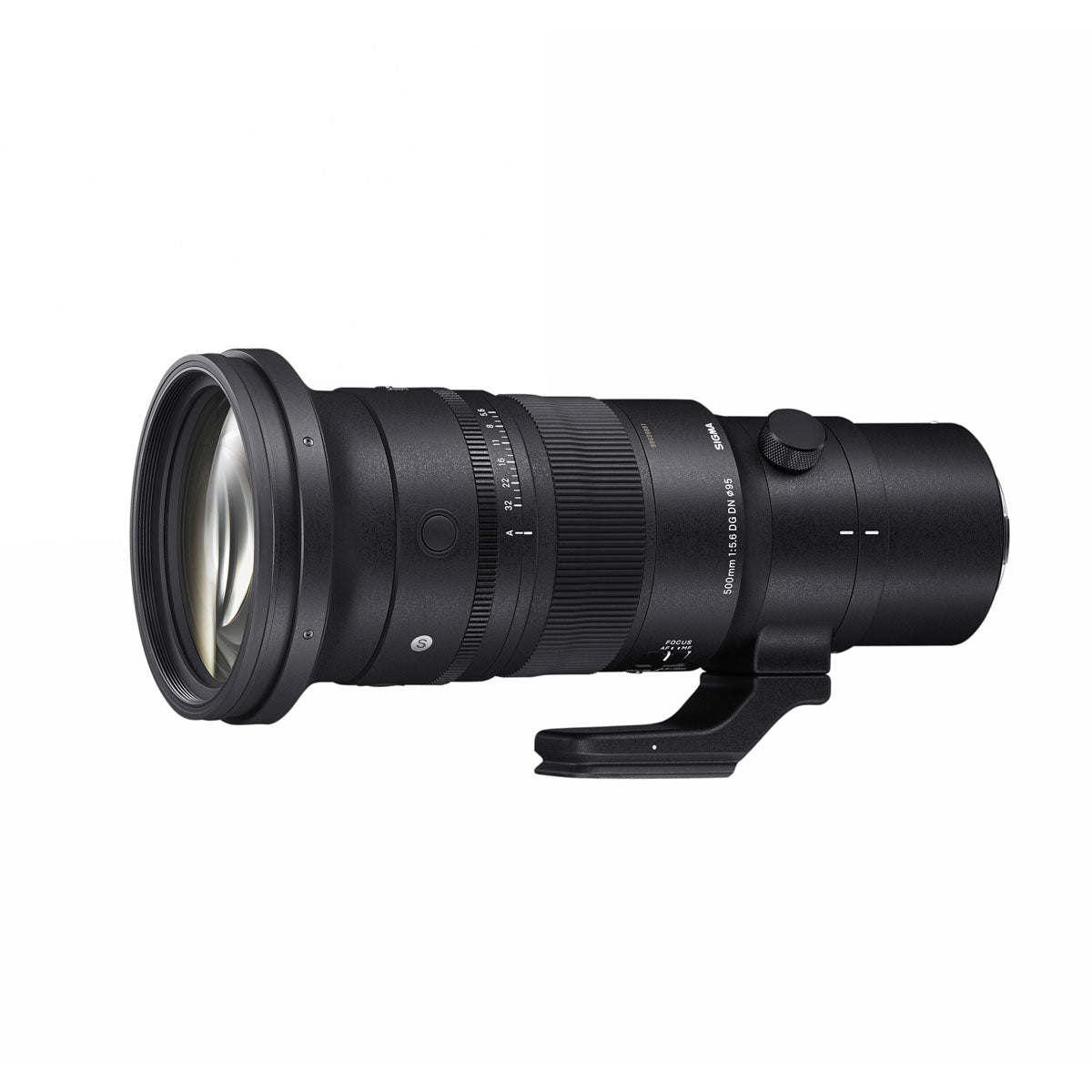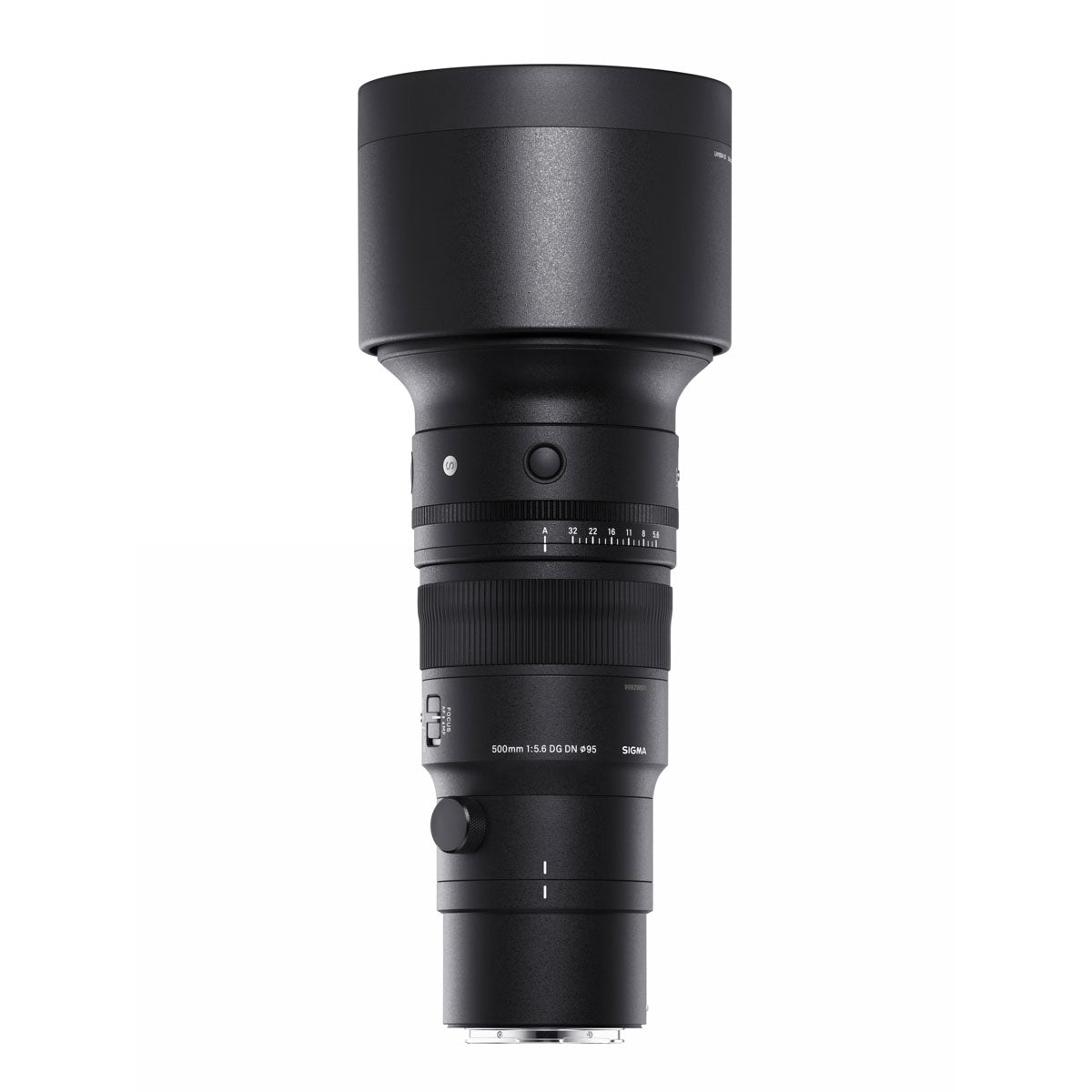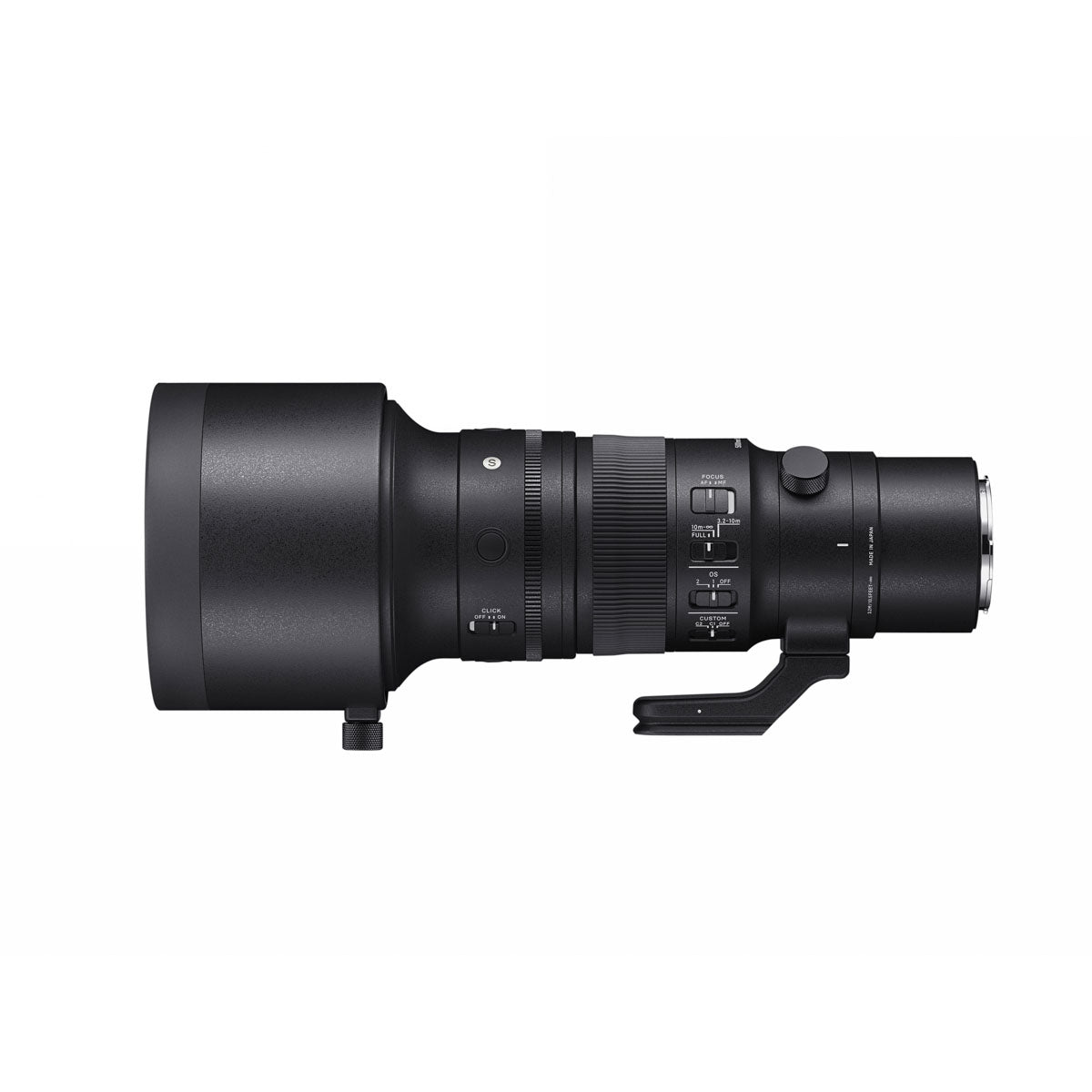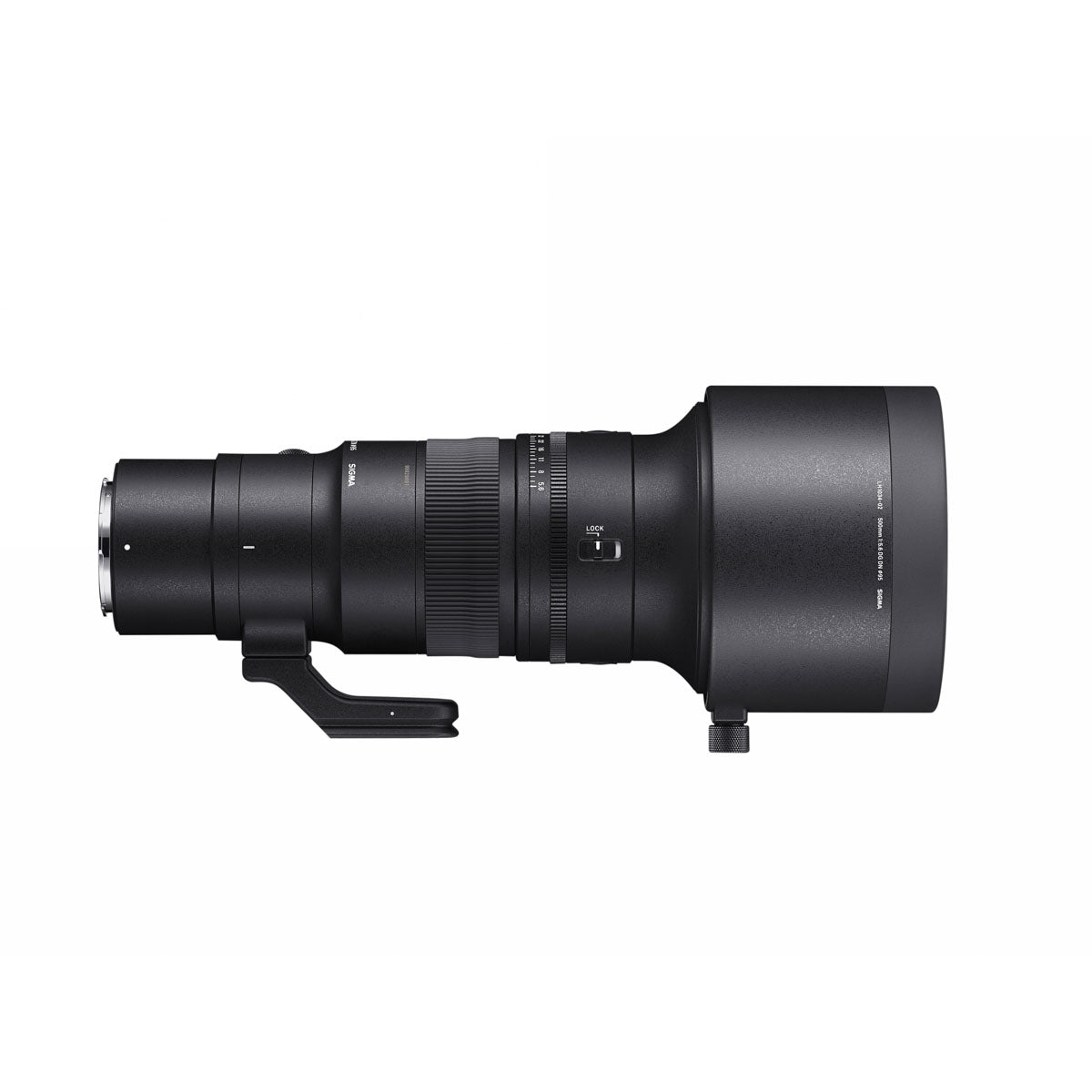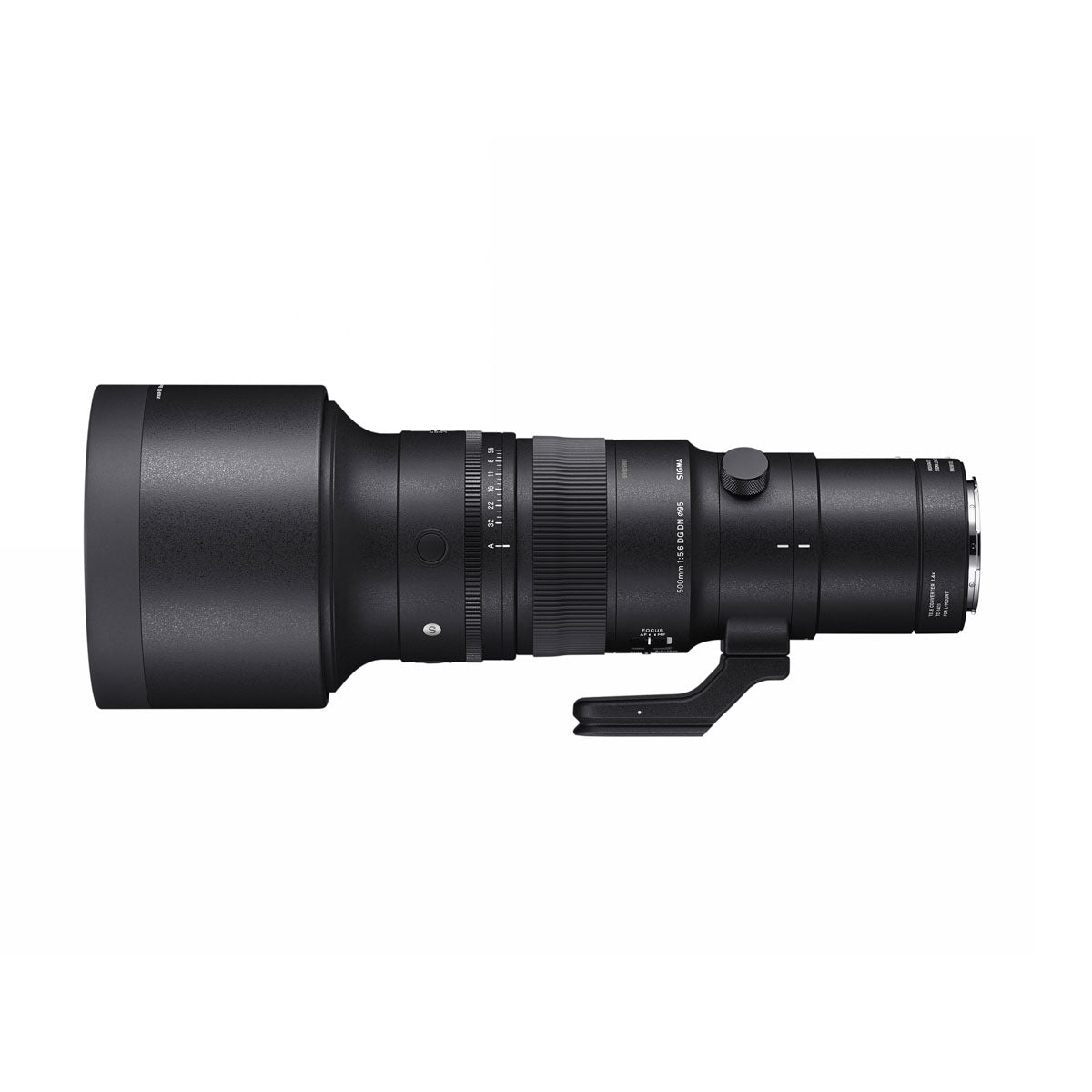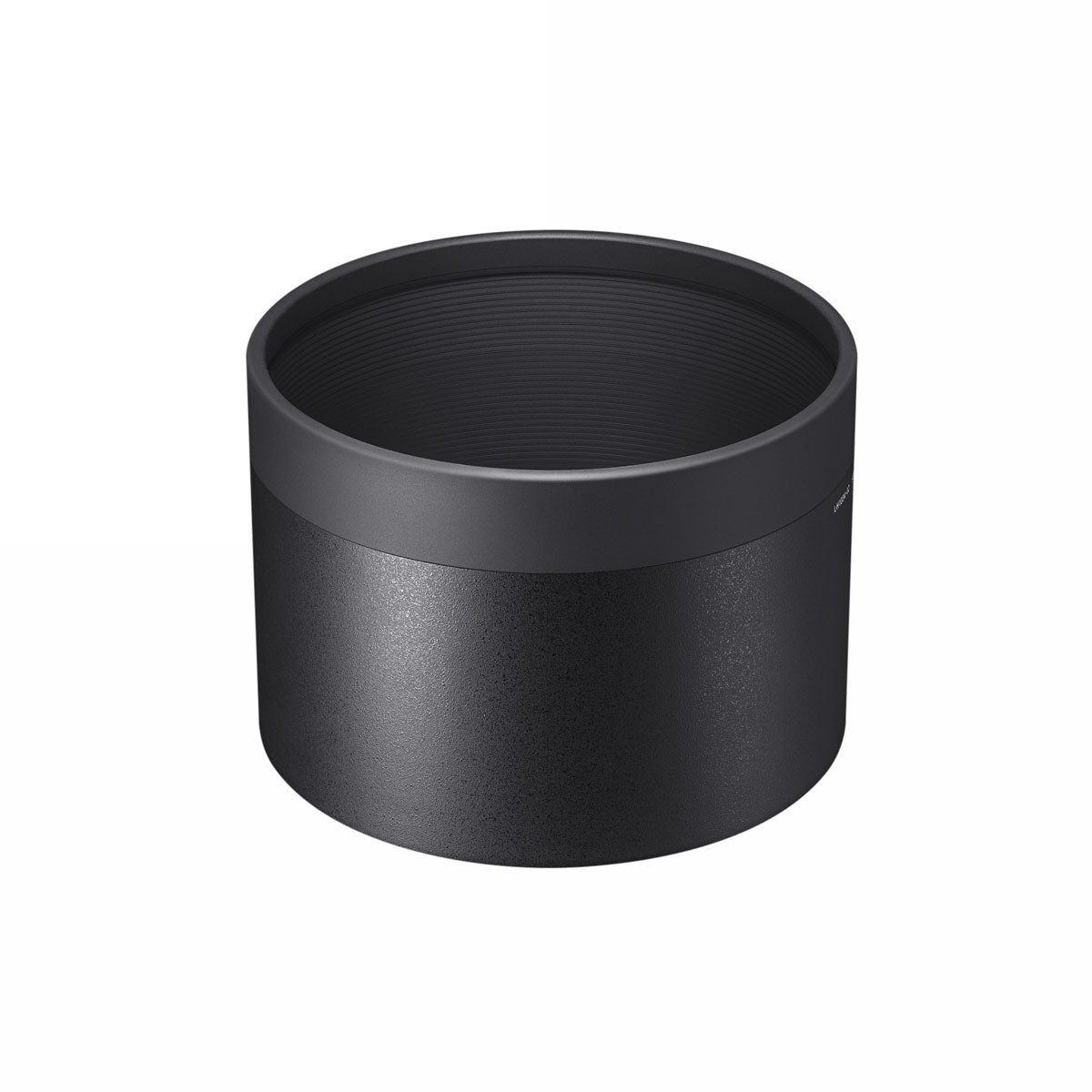Product Description
Sigma 500mm f/5.6 DG DN OS | Sports Lens – L-Mount
The Sigma 500mm f/5.6 DG DN OS | Sports is a professional ultra-telephoto prime designed exclusively for full-frame L-Mount mirrorless cameras. Combining portability with cutting-edge optical design, it delivers stunning reach, sharpness, and stabilisation — perfect for wildlife, aviation, motorsports, and fast-action photography.


Outstanding Performance Meets Portability
Weighing only 1,370g and measuring 234.6mm in length, the 500mm f/5.6 DG DN OS | Sports is impressively compact compared to traditional DSLR telephoto lenses, making it ideal for handheld fieldwork.
Key technologies include:
-
HLA (High-response Linear Actuator) motor – ultra-fast, accurate, and near-silent autofocus.
-
OS2 Optical Stabilizer – delivers up to 5 stops of image stabilisation.
-
Low-dispersion glass elements – minimise chromatic aberrations while keeping the design lightweight and portable.
This balance of performance and portability makes it one of the most versatile super-telephoto primes available today.

Professional Build Quality
-
De-clickable, lockable aperture ring – intuitive control for both photographers and videographers.
-
Detachable magnesium alloy tripod socket – Arca-Swiss compatible and lightweight for maximum flexibility.
-
TSC (Thermally Stable Composite) materials – reduce weight while maintaining durability across temperature extremes.
-
Weather-resistant construction – seals at critical points protect against dust and moisture, with a water- and oil-repellent coating on the front element.
Engineered for reliability, the lens is ready to perform in any shooting environment.


Advanced Autofocus & Stabilisation
The advanced HLA motor ensures fast-moving subjects remain perfectly sharp, outperforming conventional AF systems.
-
5 stops of stabilisation with Sigma’s OS2 algorithm – perfect for handheld low-light shooting.
-
Two OS modes –
-
Mode 1: versatile stabilisation for general shooting.
-
Mode 2: optimised for smooth panning, ideal for motorsports or aviation.
-
-
Focus Limiter switch – shortens the focus range for quicker subject acquisition.
-
Three AFL buttons* – assignable to custom functions for efficient handling.
-
USB Dock compatibility (UD-11) – L-Mount users can fine-tune OS behaviour and Focus Limiter ranges.
*Available functions vary depending on the camera body used.


Expertly Crafted Optics
The lens design includes 20 elements in 14 groups, featuring convex low-dispersion glass at the front to reduce aberrations while keeping the lens compact. Combined with Sigma’s advanced lens coatings, it delivers exceptional clarity, contrast, and flare resistance, even when shooting in backlit conditions.
By eliminating the need for diffractive optics, Sigma has achieved an optically superior, smaller, and lighter lens without compromising quality.

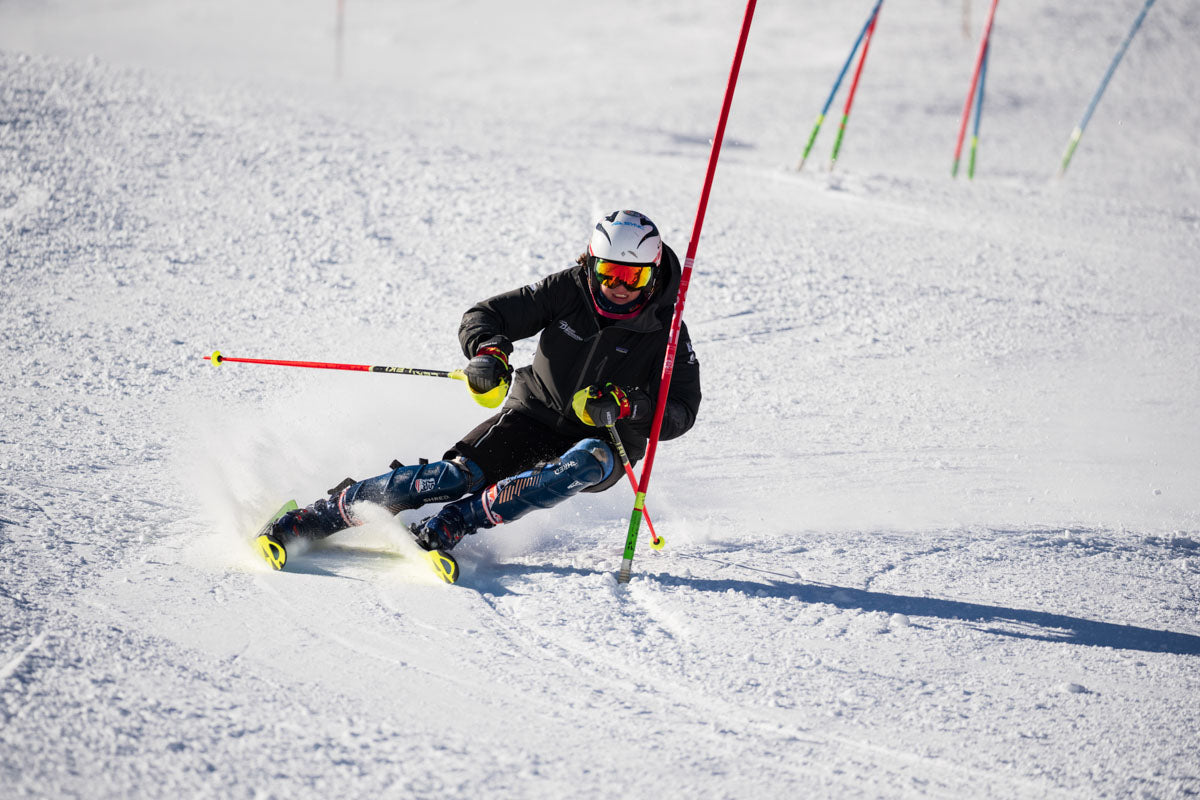
Specifications (L-Mount)
-
Lens Construction: 20 elements in 14 groups
-
Angle of View: 5°
-
Diaphragm Blades: 11 (rounded)
-
Minimum Aperture: f/32
-
Minimum Focusing Distance: 320cm
-
Maximum Magnification Ratio: 1:6
-
Filter Thread: 95mm
-
Dimensions (Diameter × Length): Ø107.6mm × 234.6mm
-
Weight: 1,370g
-
Mounts Available: L-Mount | Sony E
-
L-Mount Barcode: 00-85126-186692
-
Sony E Barcode: 00-85126-186654
-
Specifications are for L-Mount version


✨ The Sigma 500mm f/5.6 DG DN OS | Sports for L-Mount delivers pro-level telephoto performance in a remarkably portable design — the perfect lens for demanding photographers who need reach, speed, and reliability.

| Lens Mount | L-Mount |
| Maximum Aperture | f/5.6 |
| Lens Type |
Telephoto Prime
|
| Optical Coatings |
Super Multi-Layer Coating
|
| Lens Construction |
20 elements in 14 groups (3 FLD, 2 SLD)
|
| Lens Hood |
LH1034-02 (included)
|
| Aperture Blades |
11 (rounded diaphragm)
|
| Additional Features |
OS (Optical Stabilizer) function with the latest “OS2” algorithm
|
| Aperture Range | F5.6-F32 |
| Min Focus Distance | 320cm |
| Auto Focus System |
HLA (High-response Linear Actuator) motor
|
| Filter Size | 77mm |
| Focal Length | 500mm |
| Coating |
Water and Oil Repellent Coating (front element)
|
| Weight | 1370g |
| Dimensions |
107.6mm × 234.6mm
|
Payment & Security
Your payment information is processed securely. We do not store credit card details nor have access to your credit card information.

